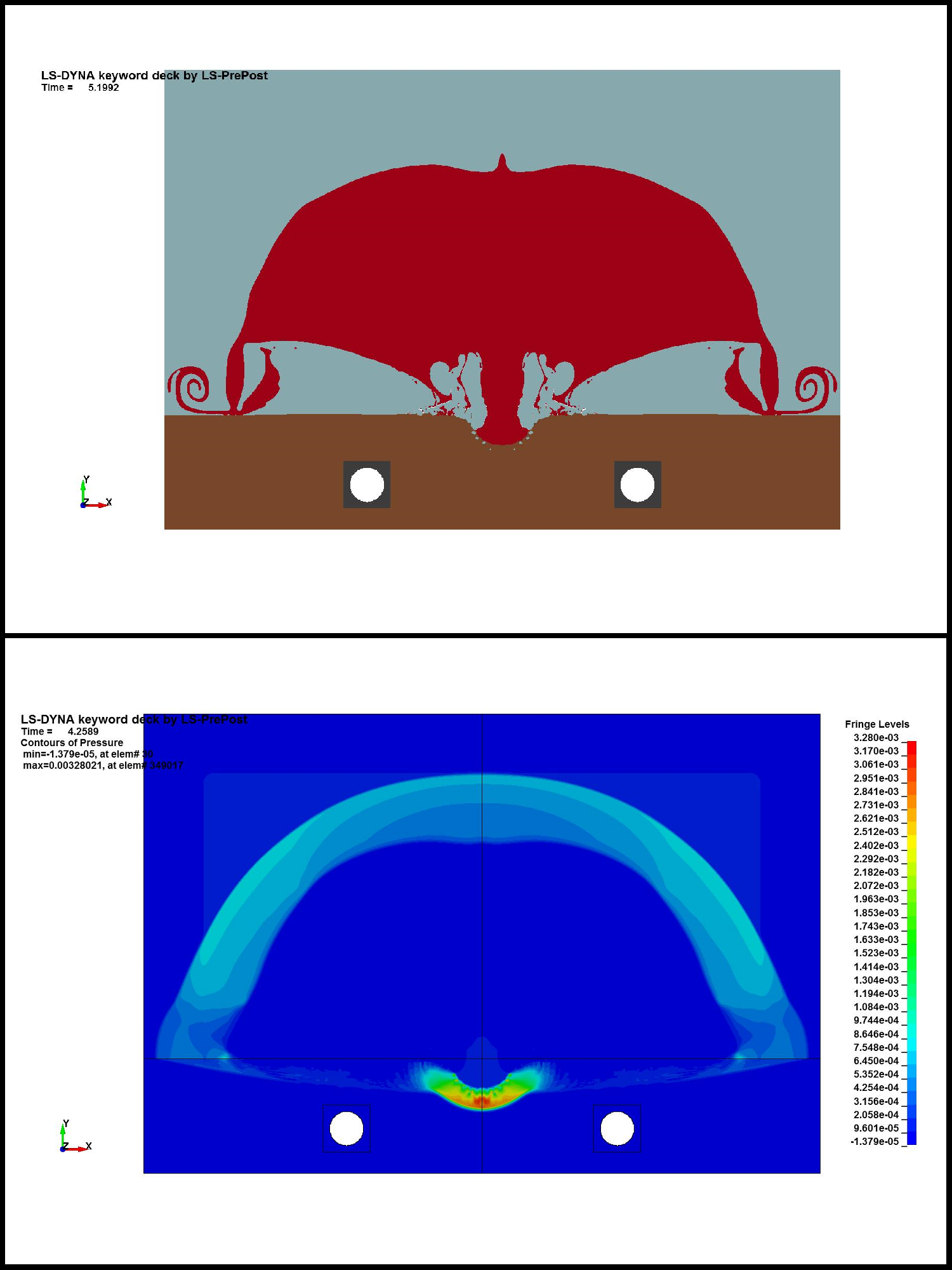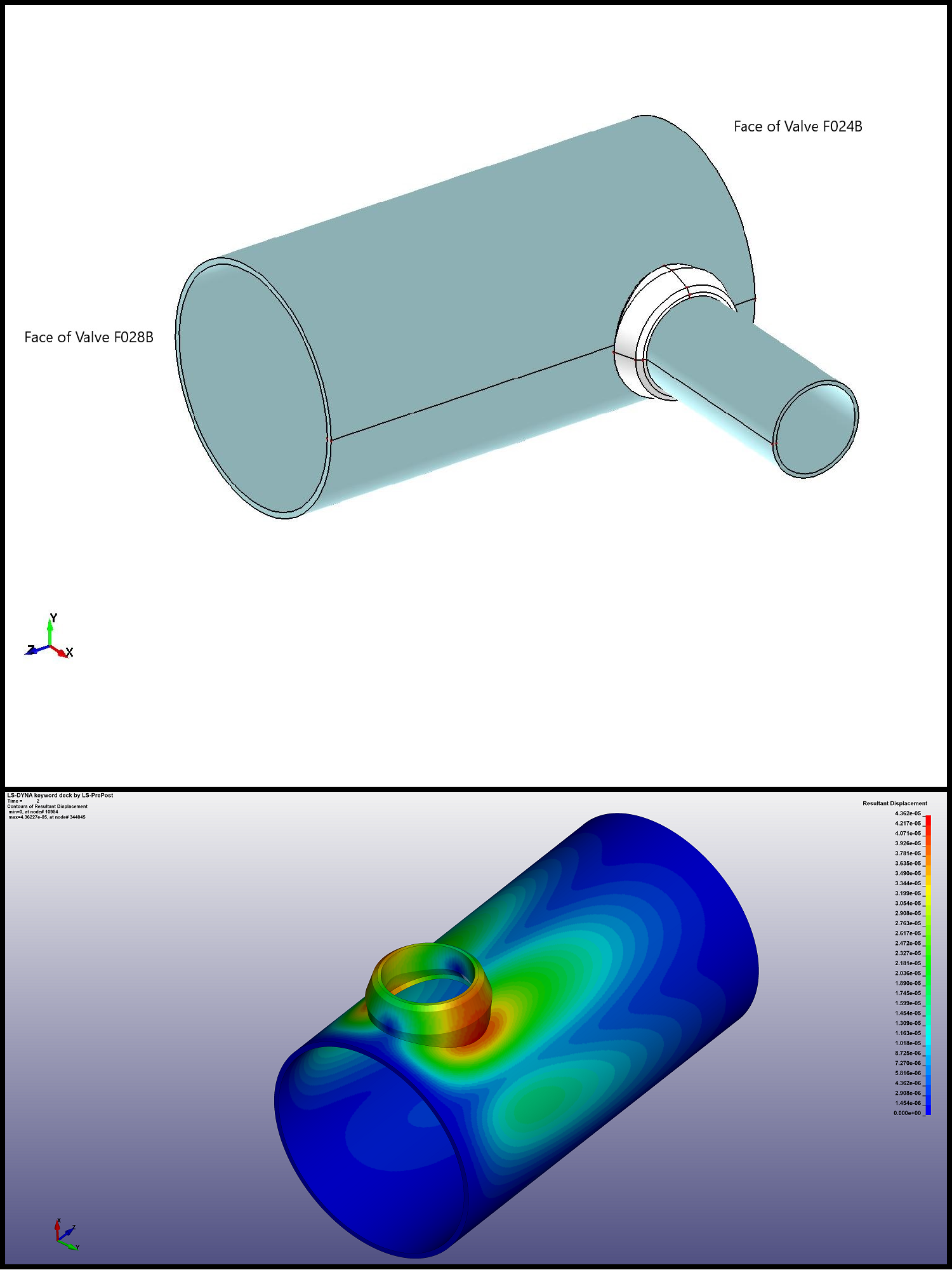
Explosive Effects
Our client required the protection of an underground piping system from a surface blast overpressure. Key to this evaluation was not redesigning the piping system depth and separation. EESI's engineering team used an LS-DYNA Arbitrary Lagrangian Eulerian (ALE) analysis to determine shockwave propagation through the soil medium and obtain the resulting blast loading on the underground piping. Once the loading was determined a structural analysis of the pipe was performed to determine damage caused by the overpressure.







